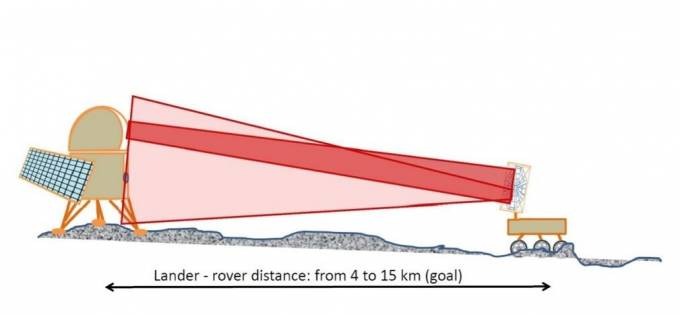ESA moon rover could explore dark craters using laser power
An ESA program called the Discovery & Preparation program funded the design of a laser system that could keep a rover supplied with power up to 15 km away from a lander spacecraft. The ESA believes that the rover powered by laser light could be used to explore the permanently darkened craters on the poles of the Moon. These permanently dark craters are believed to be rich in water ice and other valuable materials.
Finding locations where water ice could be harvested is critically important to long-term human presence on the Moon. Data gathered by other spacecraft has shown that the permanently shadowed regions on the poles of the Moon are rich in hydrogen, which strongly suggests water ice can be found there. There's potential that the water ice believed to be located in the craters could be billions of years old.
Not only does the water ice have scientific interest, but it's also valuable to lunar colonists as a source of drinking water, oxygen, and hydrogen for rocket fuel. To be able to determine for sure if water ice is present, an exploration into the craters has to be made. The challenge is that since the craters are permanently shadowed, solar power would be impossible.

ESA engineers say that the standard for this type of situation would be a nuclear-based radioisotope thermoelectric generator. However, there are problems with complexity, cost, and thermal management of the rover using a radioisotope. The problem with heat, in particular, poses issues when exploring a crater for water ice in that heat produced by the rover could melt the ice.
Researchers have been testing a 250 kg rover that is powered by a 500-watt infrared laser that would be trained on the rover as it enters shadowy regions. Tests have been conducted in the South Pole's de Gerlache and Shackleton craters. The rover would be able to convert the laser light into electrical power using a modified version of a standard solar panel with photodiodes on the side to keep it locked on the laser down to centimeters scale accuracy. The team found in testing that the rover could handle 10-degrees of slope while keeping it in the line of sight of the rover. The laser can also be used for two-way communications.
